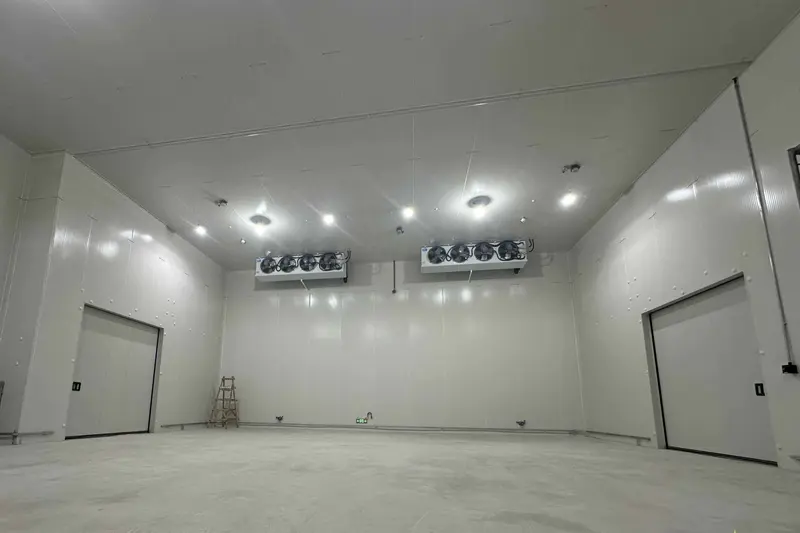How to Keep Eggplants Fresh Longer? Cold Room Storage Solutions Explained
Eggplants (also known as aubergines) are highly perishable vegetables with a short post-harvest life under normal conditions. For farms, wholesalers, and distributors, building an eggplant cold storage room is the most effective way to maintain freshness and reduce spoilage during transportation and storage.

1. Ideal Temperature & Humidity for Eggplant Cold Storage
The optimal temperature range for storing eggplants is 10–12°C (50–54°F) with relative humidity of 90–95%.
However, depending on the season and variety, the ideal storage temperature may slightly differ:
- Summer-harvested eggplants: Sensitive to cold injury below 9°C
- Autumn-harvested eggplants: Best preserved at around 8°C
- Red or ripe varieties: Prefer slightly higher temperatures of 12–13°C
Maintaining stable temperature and humidity is crucial — temperatures too low cause chilling injury, while high temperatures accelerate decay.
2. Pre-Cooling and Transportation
Right after harvest, eggplants should be quickly pre-cooled near the production site to remove field heat and suppress microbial activity.
If no pre-cooling facility is available locally, the produce should be pre-cooled again upon arrival at the distribution site before entering the main cold room.
Recommended pre-cooling temperature: 9–12°C
Cooling method: Forced-air pre-cooling for 3–4 hours to reduce core temperature evenly
Eggplants should then be transferred using refrigerated trucks to maintain the cold chain from field to storage.
3. Controlled Atmosphere (CA) Cold Room for Eggplants
For longer storage, a Controlled Atmosphere (CA) cold room offers better results.
At 10°C, with oxygen maintained at 2%, carbon dioxide at 5%, and controlled ethylene levels, eggplants can be stored for up to 30–40 days, with only 12–13% spoilage.
This technology greatly reduces respiration and decay, keeping the eggplants firm, glossy, and market-ready.
4. How Much Does It Cost to Build an Eggplant Cold Storage Room?
The cost depends on capacity, temperature range, insulation, and location.
Here’s a reference for vegetable cold room pricing:
| Cold Room Type | Temperature | Estimated Cost (USD/m³) | Total Cost (Approx.) | Storage Capacity |
|---|---|---|---|---|
| Standard Cold Room | +10°C to +12°C | $45 – $60 | $27,000 – $36,000 | 500–600m³ (≈100 tons of eggplants) |
| Controlled Atmosphere (CA) Cold Room | +10°C | $60 – $80 | $36,000 – $48,000 | Same capacity, but extended shelf life up to 1 month |
💡 This estimate includes design, insulation panels, refrigeration units, and installation.
Actual costs may vary depending on the local climate, electricity price, and equipment brands.

5. Storage Capacity Example
A cold room with 600 cubic meters (≈200m² floor area, 3m height) can typically store around:
- 90–100 tons of eggplants, depending on stacking and packaging style.
If you plan to export or distribute daily, this capacity is ideal for mid-sized farms or local trading companies.
6. Construction and Operation Timeline
- Design & quotation: 3–5 days
- Manufacturing & shipment: 10–15 days
- Installation & commissioning: 20–25 days
- Total project time: Around 30–40 days
Average daily electricity consumption for a 100-ton eggplant cold room: 40–55 kWh/day, depending on insulation thickness and usage frequency.
Example Project
A customer from the Middle East built a 100-ton eggplant cold room at 10°C for wholesale distribution:
Total investment: Around $33,000 USD
Storage capacity: 100 tons of eggplants
Cooling system: Bitzer condensing units + PU insulation panels
Result: Extended storage life to 30 days with over 88% product retention rate
 China cold storage solution provider
China cold storage solution provider
